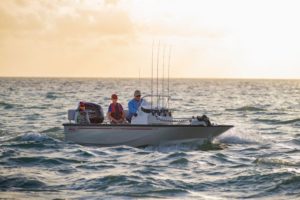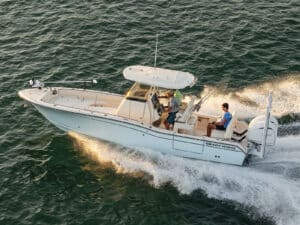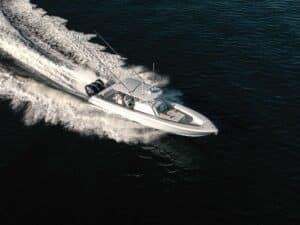Mercury Marine has introduced its new V12 600 hp Verado. Here’s some footage from our recent on-water experience with the big outboard in central Florida.
Credit: Chris Woodward
Mercury Marine took the cover off its latest Verado this week, introducing the world’s first V12 outboard at the company’s test facility in central Florida. The 7.6-liter 600 hp engine also delivers several other firsts, including a two-speed automatic transmission and a steerable gearcase. The latter means that the engine’s powerhead remains still while its lower unit—with dual propellers—rotates underwater to turn the boat.
“With boats continuing to grow bigger and performance expectations continuing to rise, boaters have been asking for a better, more capable high‑horsepower solution to meet their needs,” says Chris Drees, Mercury Marine president.
The new V12 tips the scales at 1,260 pounds. By comparison, the discontinued Seven Marine 6.2-liter 577 hp outboard weighed in at about 1,045 pounds. The new Merc was primarily designed for bigger, luxury-brand boats whose captains want the same horsepower from fewer engines. Vessels on the water this week for sea trials included a Scout 425 LXF with twins, a Boston Whaler 420 Outrage with triples and a Viking Valhalla V-46 with quads.
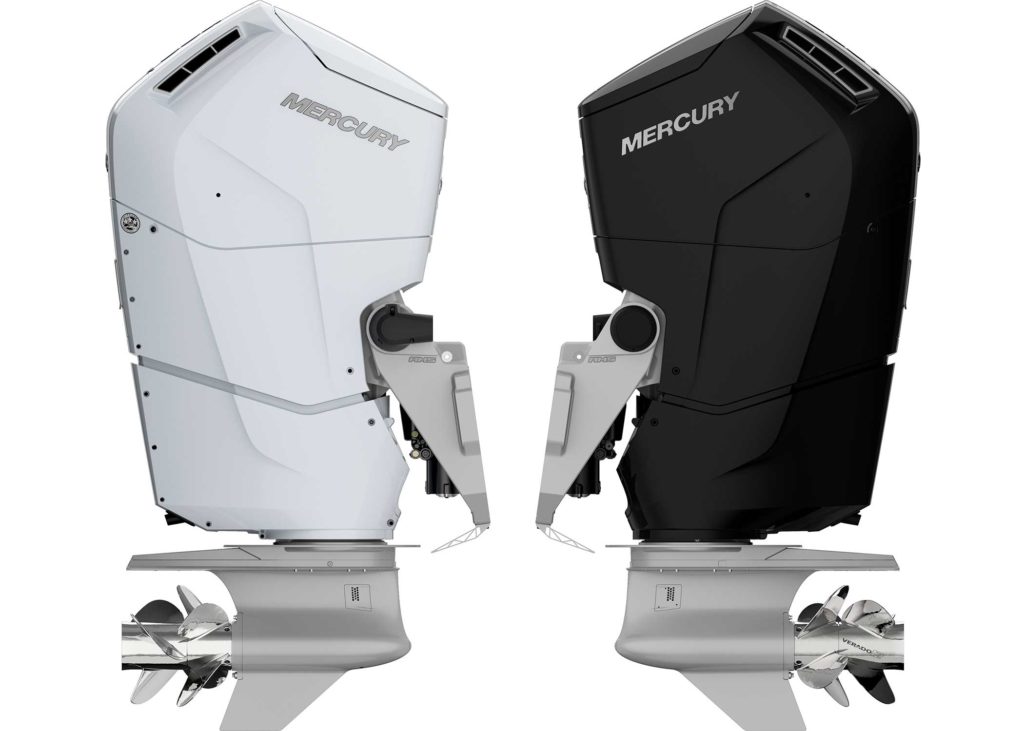
The V12 Verado is naturally aspirated, meaning no turbo or supercharger. The outboard’s two-speed transmission helps it push heavy boats out of the hole in low gear (about 20 percent lower than second gear), and then switch to a more optimal gear ratio to enhance speed and performance.
The engine’s steerable gearcase uses an electro-hydraulic system. Because it does not have to move the entire engine, the steering remains agile. While conventional outboards can turn 30 degrees in either direction, the V12 gearcase can pivot up to 45 degrees in a particular direction when the joystick is engaged (30 degrees with regular steering).
When underway, this steering takes a little getting used to; you can’t tell at a glance which way the engines are pointing. The helm-mounted Vessel View gauge, however, features a slider at the top that shows gearcase orientation. At the top right corner on the gauge, a rudder-angle indicator shows you the same information in a digital-numerical format.
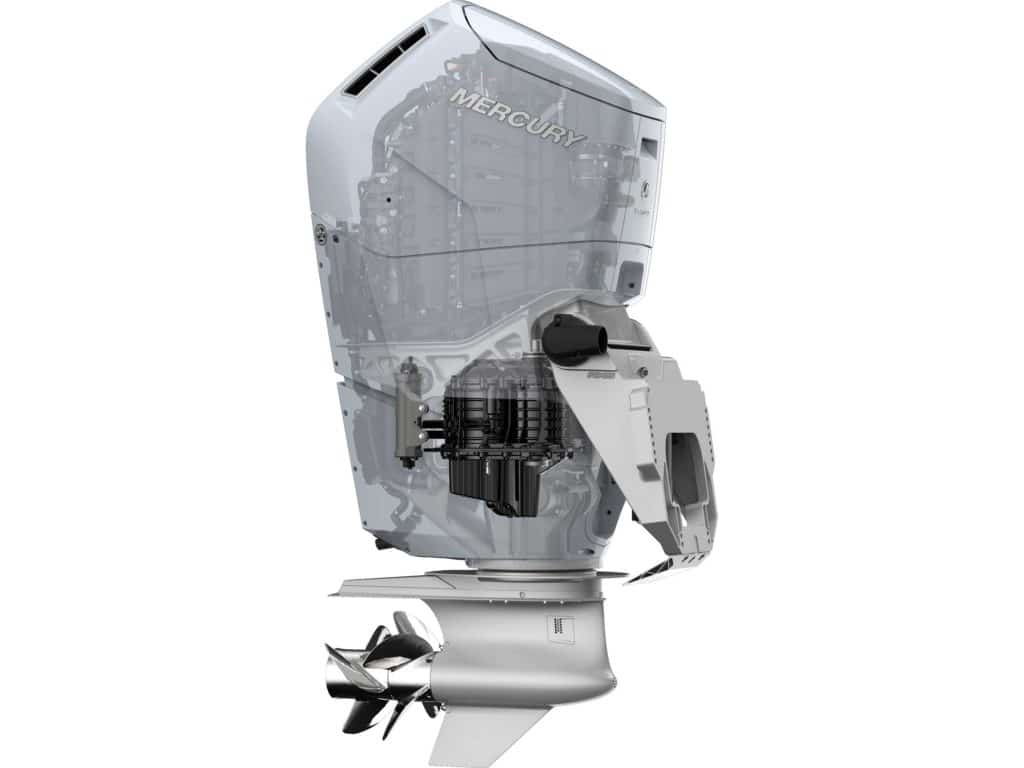
Mercury has designed a full line of propsets in various pitches and up to 18 inches in diameter for the V12. The contra-rotating setup provides greater slow-speed forward and reverse authority, Mercury says.
The engine can operate for 200 hours before routine service, including oil changes and basic maintenance, which can all be done through the top-opening cowl service hood.
As an example of speed and fuel efficiency, Mercury tests showed that the Scout 425 LXF with twin 600s reached a top speed of 61.9 mph at 6,410 rpm. Optimal cruise occurred at 4,000 rpm, running 34.3 mph and achieving 0.8 mpg. It’s worth noting that at 4,500 and 5,000 rpm, the mpg remained the same, although the gallons per hour increased as did the speed (41.3 and 46.5 mph). The boat accelerated from 0 to 30 mph in 9.76 seconds.
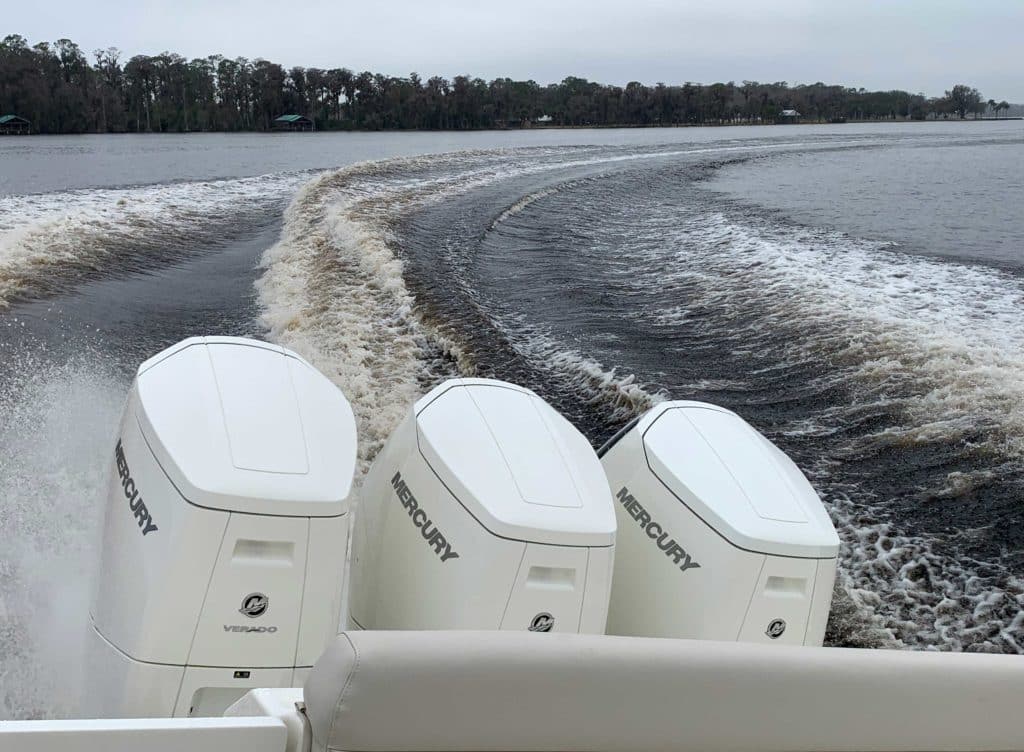
The Whaler with triple 600s notched 63.7 mph at 6,375 rpm, achieving 0.4 mpg. Optimal cruise occurred at 4,500 rpm, running 43.5 mph, and reaching 0.7 mpg. The boat accelerated from 0 to 30 mph in 8.11 seconds.
The Viking Valhalla V-46 with quad 600s hit 73.8 mph at 6,387 rpm—although I personally saw the speedometer tap 75 mph. Optimal cruise occurred at an rpm level as low as 3,500, where the boat ran 34.7 mph and achieved 0.6 mpg. That mpg remained constant up through 4,500 rpm. The boat accelerated from 0-30 in 6.76 seconds.
Read Next: Mercury Racing Announces 450R Outboard
The outboard will be available this spring in phantom black, cold fusion white, warm fusion white and pearl fusion white; it will cost approximately $77,000.
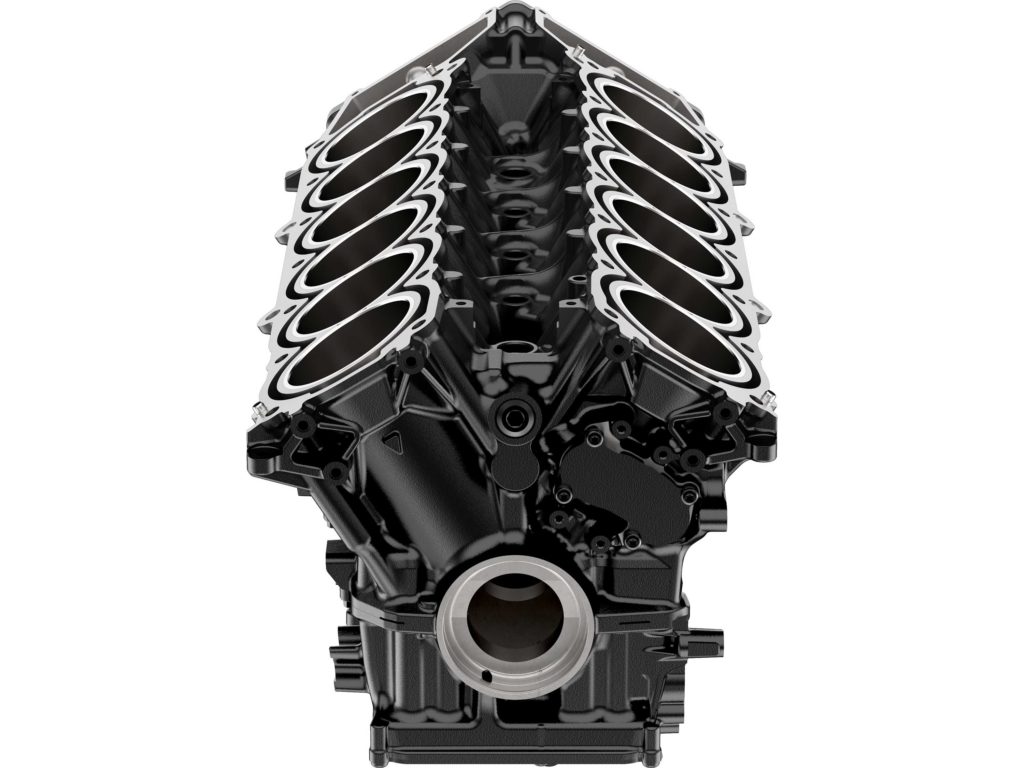
Specifications
- Cylinders: 64-deg. V12
- Displacement: 7.6L
- Alternator: 150 amps
- Fuel: 87 octane
- Dry Weight: 1,260 lb.
- Shaft Lengths: 20, 25, 30, 35 in.

